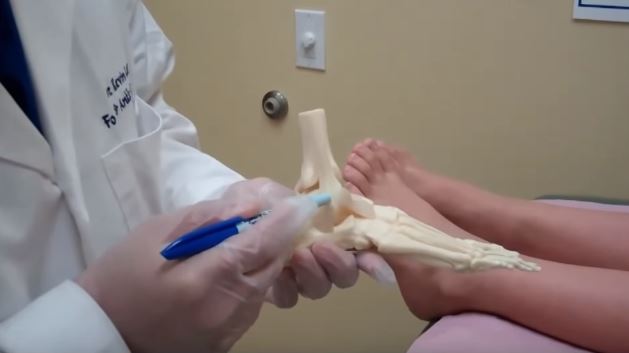 Anyone can experience a twisted ankle at any time, so it doesn’t really seem like a big deal. In fact, normal sprains, in my experience, just tend to go away on its own after a few days or two weeks maximum. So when a family member started complaining about his foot, I did not take him seriously.
Anyone can experience a twisted ankle at any time, so it doesn’t really seem like a big deal. In fact, normal sprains, in my experience, just tend to go away on its own after a few days or two weeks maximum. So when a family member started complaining about his foot, I did not take him seriously.
However, he began to suffer from extreme pain, which I thought was also not normal. When he still couldn’t put even just a little bit of weight on it within one week, it was a sign that it was not healing as I expected it to. Reading a bit about these types of injury and how to treat them, I chanced upon physiotherapy as an option. Because it seemed like the best solution, we went to visit Wyndham Physio and Rehabilitation in Werribee.
During the first consultation visit, the therapists assessed the damage on his foot. Though “normal” sprains do not warrant more attention, there are worse cases as well. In these instances, some ligaments might have been ruptured, or bones might have broken. An X-ray or a CT scan would be necessary to determine the severity. Afterward, the specialist informed us that rehab exercise was needed in order to ease the throbbing and regain his mobility.
The experience taught me a lot about the fragility of the ankle, and how dangerous sprains can be. In fact, those who are very active like athletes who run or train a lot, are most at risk. Once one of your feet gets twisted and proper healing does not happen, the damage to the ligaments and bones can remain there unnoticed.
All those who experience this should be careful and take the proper steps immediately following such an accident:
Initial Treatment
After twisting the foot, the first step is to follow PRICE: Protection, Rest, Ice, Compression, and Elevation.
Protection means that the ankle should be wrapped or kept in a brace, a walking boot, or you should even use crutches to keep weight off of it.
Rest should be done, not just because movement would be excruciating, but also to reduce further damage to the ligaments.
Applying ice is necessary to stop the swelling and soreness. Doing this for 20 to 30 minutes every 2 to 4 hours, in the beginning, should be enough.
Compression means using a bandage or other taping to support the injured tissue and decrease inflammation.
Elevation means keeping the foot higher than the heart will help address the soreness.
Massage and other Pain Relieving Techniques
Upon the first visit to a physiotherapist, he/she might employ some methods to make it hurt less, either massage the painful area, mobilizing the joints or even using acupuncture. Anti-inflammatory medication might also be prescribed at this time by the specialist. Otherwise, taking paracetamol can help as well.
Physiotherapy Exercise
At this point, it is vital to consult an expert to help the torn ligaments reattach and heal through proper exercise. Without this, it will still repair but it might end up rigid. Starting the process with the appropriate movements will avoid this and encourage flexibility back on the ankle.
Those who have a history of previous sprains should definitely turn to a physiotherapist as a stiff joint can make you vulnerable to future problems like calf and leg injuries and even back pain. Again, just because a twisted ankle will mend by itself, it doesn’t mean that all is well. Those who walk or run a lot should seek the advice of a professional to ensure a true and full recovery.
During the physiotherapy, the exercises should increase in complexity as well in order to slowly build muscle strength. This means progressing from no weight bearing on the foot to partial and finally to full weight. Athletes will be guided to ease them back into their normal routine. All of these will be part of your plan designed specifically during your first consultation.
In short, there is not just value to be gained in consulting with a physiotherapist following an ankle sprain. Not only does the pain immobilize you, but this lingering doubt in your mind is also enough to tell you that self-medication will not work. As with the case of my family member, regaining the use of his foot and being able to go back to his active lifestyle was the reward for going for professional help. Only by going through all the steps outlined above can there be a full and real recovery.
As for me, personally, I learned not to take things like this so lightly. I learned that what seemed like a small accident could bear fruit to such serious damage and future problems. However, experts are there, with their knowledge and capabilities, to handle exactly these situations. So go and consult with a physiotherapist immediately. Seeking treatment from a specialist means targeting the root cause of the problem. From diagnosis to intervention to recovery, every step is targeted with accurate management.

